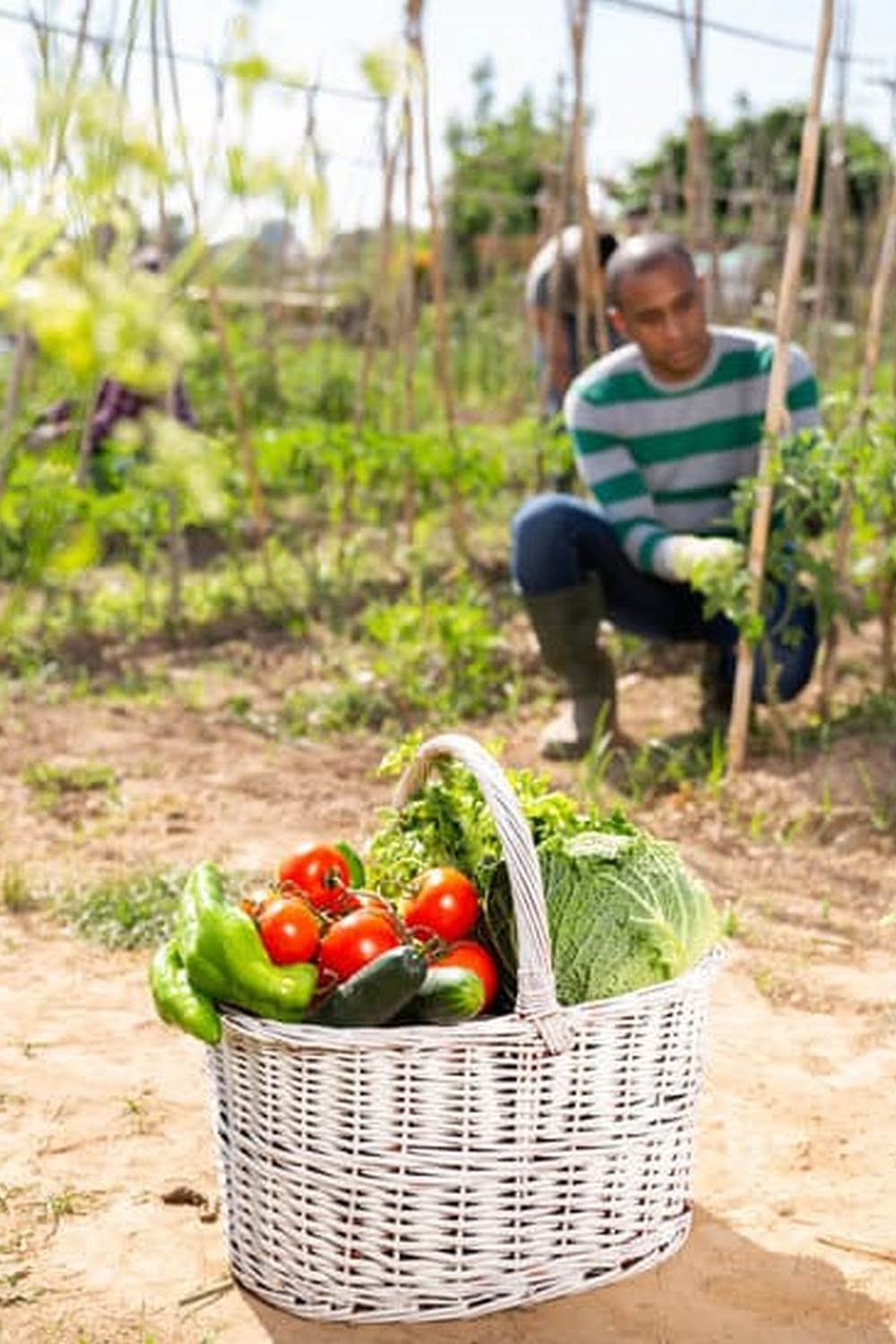Are bricks safe for vegetable gardens? This is a common question among gardeners looking to elevate their gardening experience with the use of bricks. In this article, we will explore the benefits and potential risks of using bricks in vegetable gardens and provide guidelines for safely incorporating them into your garden.
Using bricks in vegetable gardens has become increasingly popular for creating raised beds and pathways. Not only do they add a visually appealing element to the garden, but they also provide several practical advantages. However, it is crucial to prioritize safety when choosing and installing bricks in your garden to ensure they do not pose any harm to your plants or the environment.
In the following sections, we will delve into the benefits of using bricks for raised beds and pathways in vegetable gardens, as well as potential risks associated with certain types of bricks. We will also discuss different types of bricks available, proper preparation techniques, installation tips, and maintenance guidelines to help you make informed decisions about integrating bricks into your vegetable garden.
Stay tuned for expert recommendations on how to enhance the safety and integrity of your garden with carefully selected and maintained bricks.
Benefits of Using Bricks in Vegetable Gardens
There are several benefits to using bricks in vegetable gardens, particularly for creating raised beds and pathways. Bricks offer a durable and long-lasting material for constructing raised beds, which can help improve soil drainage and prevent soil erosion. Additionally, the use of bricks can help define garden pathways, making it easier to navigate the garden and reducing the risk of accidentally trampling on delicate plants.
One of the main advantages of using bricks in vegetable gardens is their ability to retain heat. This can be particularly beneficial in cooler climates or during the spring planting season when soil temperatures may still be relatively low. The warmth retained by the bricks can help promote better plant growth and earlier harvests.
Bricks also provide a neat and organized appearance to vegetable gardens, adding a touch of visual appeal to the overall design. Whether used for raised beds or pathways, bricks can create clean lines and a sense of structure within the garden space. In addition, they require minimal maintenance once installed, making them a convenient choice for busy gardeners.
| Advantages of Using Bricks | Description |
|---|---|
| Durability | Bricks offer a durable material for constructing raised beds and pathways |
| Heat Retention | Bricks have the ability to retain heat, promoting better plant growth in cooler climates |
| Visual Appeal | Bricks provide a neat and organized appearance to vegetable gardens |
Potential Risks
While using bricks in vegetable gardens can offer numerous benefits, it is important to be aware of potential risks that certain types of bricks may pose. One common risk is the presence of toxic chemicals in some types of bricks, such as old railway sleepers or reclaimed bricks, which may contain contaminants like creosote, lead paint, or asbestos.
These harmful substances can leach into the soil and affect the health and safety of the plants as well as the individuals consuming them.
In addition to chemical concerns, using non-porous bricks can result in poor drainage and water retention issues. Bricks that do not allow for proper air circulation and water drainage could potentially create an environment where mold and mildew thrive, posing a threat not only to the plants but also to individuals working in the garden.
Another risk to consider is the structural integrity of the bricks over time. Weathering and deterioration may occur with certain types of bricks, leading to possible collapse or instability within raised beds or pathways. It is important to carefully assess the durability and longevity of different brick options when considering them for use in vegetable gardens.
Overall, while there are significant benefits to using bricks in vegetable gardens, it is crucial to weigh these against potential risks related to toxicity, drainage issues, and structural integrity. By carefully selecting appropriate types of bricks and taking necessary precautions, gardeners can mitigate these risks and create safe and healthy environments for their vegetables to thrive.
| Potential Risks | Exploring Potential Dangers |
|---|---|
| Toxic chemicals | Presence of contaminants like creosote, lead paint, or asbestos |
| Drainage issues | Non-porous bricks leading to poor water drainage |
| Structural integrity | Weakening over time affecting stability |
Types of Bricks
When considering using bricks in a vegetable garden, it’s essential to understand the different types of bricks available and their suitability for this purpose. Not all bricks are created equal, and some may pose risks to the plants, soil, and overall safety of the garden. Therefore, choosing the right type of brick is crucial for the success of your vegetable garden.
Common Types of Bricks
There are several common types of bricks to consider when planning a vegetable garden. Clay bricks, which are made by firing clay in a kiln, are a popular choice for their durability and natural aesthetic appeal. Concrete bricks, on the other hand, are made from concrete and aggregate materials and offer excellent strength and stability. Both types of bricks have their advantages and drawbacks when used in vegetable gardens.
Suitability for Vegetable Gardens
When choosing between clay or concrete bricks for a vegetable garden, it’s important to consider factors such as water absorption, leaching of chemicals, and potential contaminants that could affect plant growth. Clay bricks tend to have low water absorption rates and minimal leaching of chemicals, making them a safe option for vegetable gardens.
On the other hand, concrete bricks may contain higher levels of alkaline substances that can affect soil pH and plant health if not properly treated before use.
Environmentally-Friendly Options
For environmentally-conscious gardeners, there are now eco-friendly options available such as recycled or reclaimed bricks. These sustainable alternatives not only reduce waste but also provide a unique charm to the garden while maintaining safety for growing vegetables. Consider exploring these environmentally-friendly options when selecting bricks for your vegetable garden.
Brick Preparation
When using bricks in vegetable gardens, it is essential to properly prepare them to ensure the safety and health of the plants. Here are some important steps to consider for brick preparation:
- Selection of Bricks: Choose bricks that are suitable for outdoor use and are free from any harmful chemicals or toxins such as lead or asbestos.
- Cleaning Bricks: Before using bricks in the garden, make sure to clean them thoroughly to remove any dirt, debris, or contaminants. This can be done by scrubbing the bricks with a mixture of water and mild soap, then rinsing them off with water and allowing them to dry completely.
- Sealing Bricks: After cleaning, it is recommended to seal the bricks to prevent moisture absorption and the growth of mold or mildew. Apply a breathable masonry sealer according to the manufacturer’s instructions, ensuring that it is safe for use around plants and vegetables.
Properly preparing the bricks before use will help create a safe environment for growing vegetables and ensure that they are not exposed to any harmful substances that may leach from untreated bricks. Additionally, cleaning and sealing the bricks will prolong their lifespan and maintain their appearance in the garden.
It is important to note that regular maintenance of sealed bricks is necessary to uphold their safety and integrity. Inspect the bricks periodically for any signs of damage or wear, and reapply sealer as needed to maintain their protective coating. By following these preparation steps and proper maintenance practices, you can enjoy the benefits of using bricks in your vegetable garden while prioritizing safety.
Installation Tips
When it comes to installing bricks in vegetable gardens, it’s important to follow certain steps to ensure the safety and integrity of the garden. Here are some step-by-step instructions for safely installing bricks in your vegetable garden:
1. Clear the Area: Before starting the installation process, make sure the area where you plan to install the bricks is clear of any debris, rocks, or other obstructions. This will provide a smooth surface for laying the bricks and prevent any potential hazards.
2. Level the Ground: Use a shovel and a level to ensure that the ground is level and even before laying the bricks. This will help prevent any unevenness or wobbling once the bricks are in place.
3. Lay a Foundation: It’s important to lay a foundation before placing the bricks. This can be done using gravel or sand to provide stability and support for the bricks, especially if they are being used for raised beds.
4. Arrange Bricks Carefully: Once the foundation is in place, carefully arrange the bricks in your desired pattern or design. Take your time to ensure that they are spaced evenly and securely placed on the foundation.
5. Secure Bricks: Depending on your garden design and layout, you may need to secure the bricks in place with mortar or adhesive to prevent them from shifting or moving over time.
By following these installation tips, you can safely install bricks in your vegetable garden and create a durable and long-lasting structure for your plants. Proper installation will help maintain safety and integrity within your garden space while also adding aesthetic appeal.
Maintenance
Regular Inspection
It is important to regularly inspect the bricks in your vegetable garden for any signs of wear, damage or shifting. Check for any cracks, loose bricks, or uneven surfaces that could pose a potential hazard. By detecting these issues early, you can prevent further damage and ensure the safety of your vegetable garden.
Weeding and Cleaning
Weeds and debris can accumulate between the bricks over time, compromising the integrity of the structure. Regularly remove weeds and clean the surface of the bricks to prevent them from absorbing moisture and causing deterioration. This will also help maintain the aesthetic appeal of your vegetable garden.
Sealing
To prolong the lifespan of your bricks and protect them from environmental elements, consider sealing them with a water-resistant sealant. This will help prevent water penetration, mold growth, and erosion, ultimately maintaining their safety and structural integrity. Be sure to follow the manufacturer’s instructions for proper application and reapplication as needed.
By implementing these maintenance tips, you can ensure the safety and longevity of using bricks in your vegetable garden. Prioritizing regular inspection, cleaning, and sealing will help preserve the integrity of your garden structure while providing a safe environment for your plants to thrive.
Conclusion
In conclusion, using bricks in vegetable gardens can be a beneficial and safe option if the proper precautions are taken. The benefits of using bricks for raised beds and pathways include their durability, ability to retain heat, and their aesthetic appeal. However, it is important to consider the potential risks associated with using certain types of bricks, such as those containing harmful chemicals or toxins that may leach into the soil.
When choosing bricks for a vegetable garden, it is essential to select ones that are safe for use around edible plants. This may mean opting for natural or untreated bricks, and avoiding those that have been manufactured with harmful additives. Proper preparation of the bricks through cleaning and sealing can also help to ensure their safety for use in a vegetable garden.
It is important to follow installation tips and maintenance guidelines to guarantee that the bricks remain safe and functional in a vegetable garden. Regular inspection and upkeep can help to identify any issues early on, preventing potential hazards from arising. By taking these safety considerations into account, gardeners can enjoy the benefits of using bricks in their vegetable gardens while minimizing any potential risks.
Frequently Asked Questions
What Is the Safest Material for a Vegetable Garden?
The safest material for a vegetable garden is untreated wood, such as cedar or redwood. These types of wood are resistant to rot and insects, making them ideal for constructing raised garden beds without the worry of harmful chemicals leaching into the soil and impacting the plants.
Is It Safe to Use Cinder Blocks for Vegetable Garden?
Using cinder blocks for a vegetable garden can be safe as long as they are not treated with any harmful chemicals. It’s important to ensure that the cinder blocks are not contaminated with any substances that could leach into the soil and potentially impact the vegetables.
If using cinder blocks, it’s best to line the inside of the blocks with landscape fabric to create a barrier between the block and the soil.
Can You Make a Garden Bed Out of Bricks?
Yes, you can make a garden bed out of bricks as long as they are natural and untreated. Bricks can be stacked to create raised garden beds, providing a sturdy and long-lasting structure for growing vegetables.
Just like with other construction materials, it’s essential to avoid any bricks that may have been treated with chemicals that could potentially harm plants or contaminate the soil.

If you’re looking to get into vegetable gardening, or are just looking for some tips on how to make your current garden better, then you’ve come to the right place! My name is Ethel and I have been gardening for years. In this blog, I’m going to share with you some of my best tips on how to create a successful vegetable garden.





